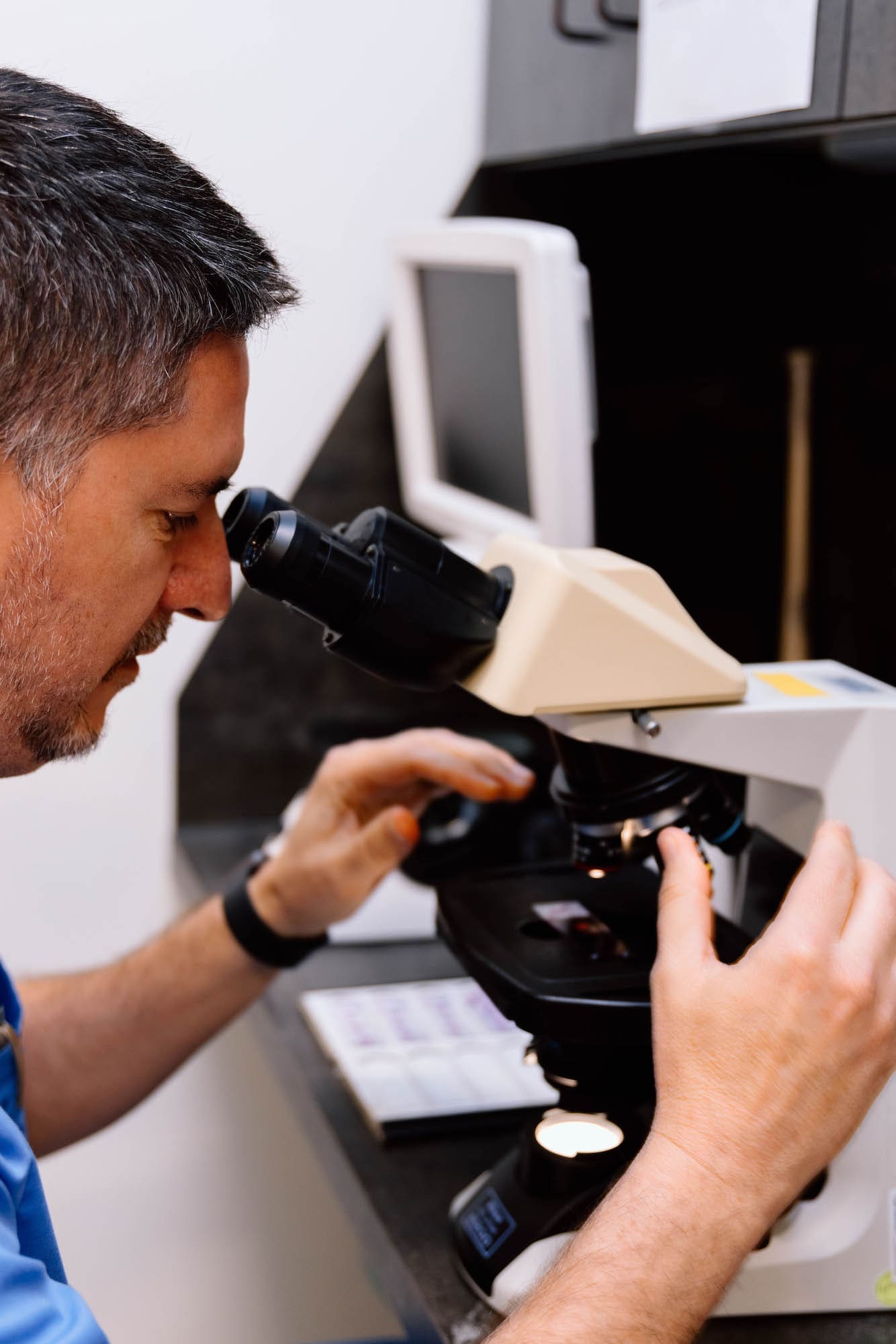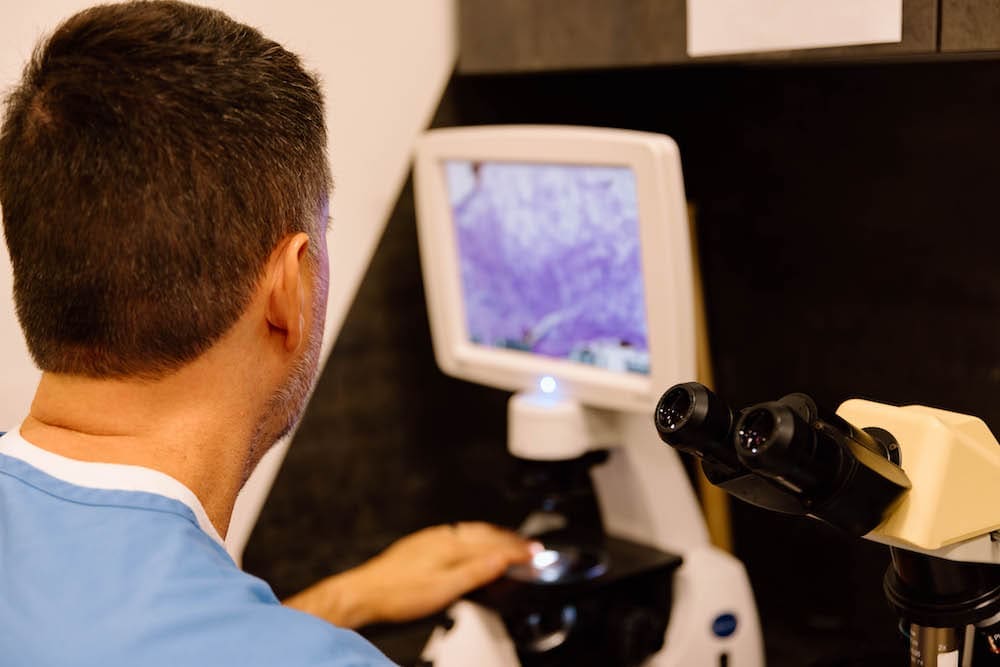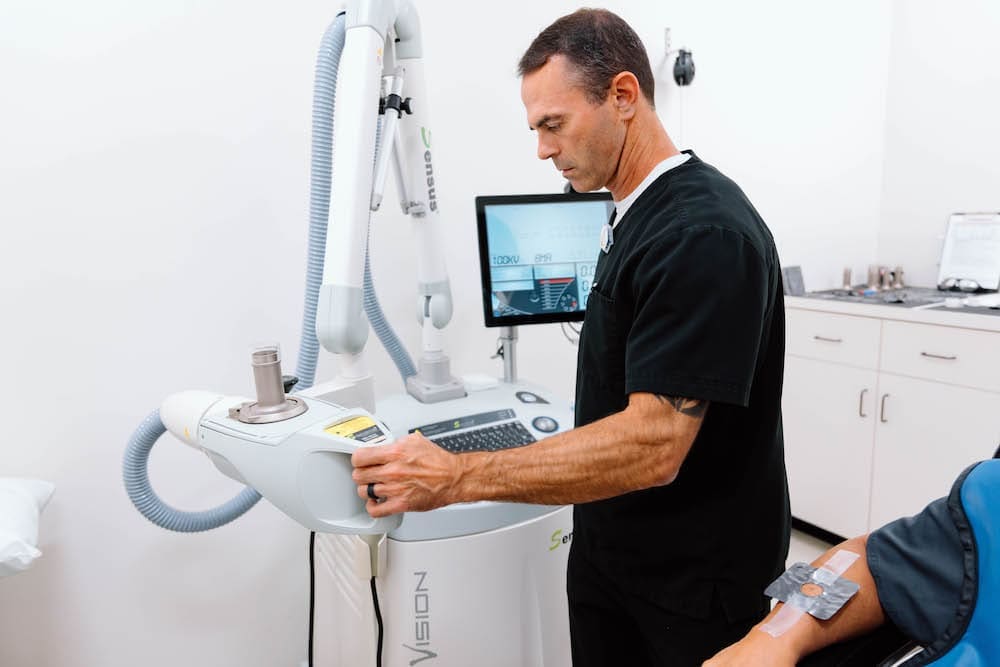Skin Cancer Treatment
Mohs Micrographic Surgery
Dr. Stites spent three years training in Mohs micrographic surgery at Vanderbilt University Department of Dermatology with Drs. Michel McDonald and Thomas Stasko and passed the Micrographic Dermatologic Surgery Subspecialty Certification Examination. Mohs surgery, also known as microscopically controlled surgery, was developed by Dr. Frederic Mohs in the 1930’s. It is a common procedure used to treat certain skin cancers and to prevent the recurrence of that cancer. This precise method of treating skin cancers allows us to surgically remove the skin cancer and immediately examine the tissue to identify any remaining cancerous tissue.
Mohs surgery is a precise surgical technique used to treat skin cancer. During Mohs surgery, thin layers of cancer-containing skin are progressively removed and examined until only cancer-free tissue remains. Mohs surgery is also known as Mohs micrographic surgery.
The goal of Mohs surgery is to remove as much of the skin cancer as possible, while doing minimal damage to surrounding healthy tissue. Mohs surgery is usually done on an outpatient basis using a local anesthetic.
Mohs surgery is an improvement to standard surgery (local excision), which involves removing the visible cancer and a small margin of surrounding healthy tissue all at once. Mohs surgery allows surgeons to verify that all cancer cells have been removed at the time of surgery. This increases the chance of a cure and reduces the need for additional treatments or additional surgery. For more information on Mohs Surgery click here.
Recovery time depends on the size of the skin cancer. While some wounds can heal by themselves, others may require sutures, a small skin graft or in some cases, reconstructive surgery. If any discomfort should occur following this treatment, it is usually very mild and can be treated with Tylenol. While minimal bleeding is common, you should seek immediate medical attention if you experience persistent, excessive bleeding. For more information, please click here.
ELECTRODESICCATION & CURETTAGE
This technique is also referred to as a “scrape and burn” technique that is used to effectively treat small, superficial, and non-aggressive cancers. This two-part skin cancer treatment uses a tool to scrape out malignant cells and an electric needle to burn the area to create a clear margin around the treated area.
EXCISION
Excision is a technique that removes the malignant cells and a specific margin around the cancerous area surgically. The area of skin removed is then tested to ensure that no cancer cells remain.
SUPERFICIAL RADIATION THERAPY
What is SRT?
Superficial Radiotherapy (SRT), is a low energy radiotherapy that penetrates only a short distance below the surface skin. It is highly effective, painless, and a cosmetically attractive alternative to surgery in selected cancer and patient populations. The SRT-100+™ is the new and most advanced choice for superficial radiotherapy available today. It is painless and every similar to having an X-Ray.
Why choose SRT?
The SRT-100+™ treats non-melanoma skin cancer that are found on the surface of the skin. It can be used for lesions on the arms, legs, back and trunk. It is especially well suited for skin cancers of the head and neck regions—the fold in the nose, eyelids, lips, corner of mouth, and the lining the ear—that would otherwise lead to a less than desirable cosmetic outcome. SRT is also a great treatment option for patients who are considered high risk for surgical procedures.
What to expect?
- The SRT procedure is Non-Surgical and does not require the use of anesthetics.
- You will be required to attend several sessions, depending on your doctor’s recommendations.
- Tell your doctor about medications you are taking and continue them unless your physician tells you otherwise.
- The X-Ray will be directed toward the lesions by placing an applicator cone over the treated area.
- Once the treatment begins, it will take less than 90 seconds to deliver the therapy.
- The treatment is painless, but you will notice skin redness by the end of the first week’s treatment.
- Post treatment, the skin will form a protective scab. The new, healthy skin will develop underneath it.







